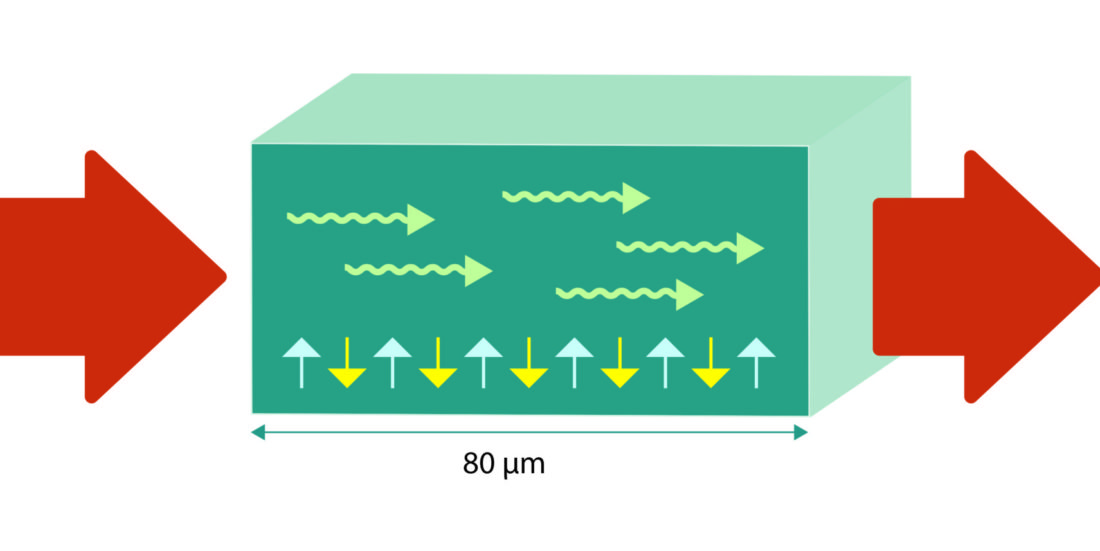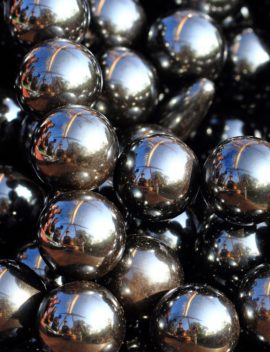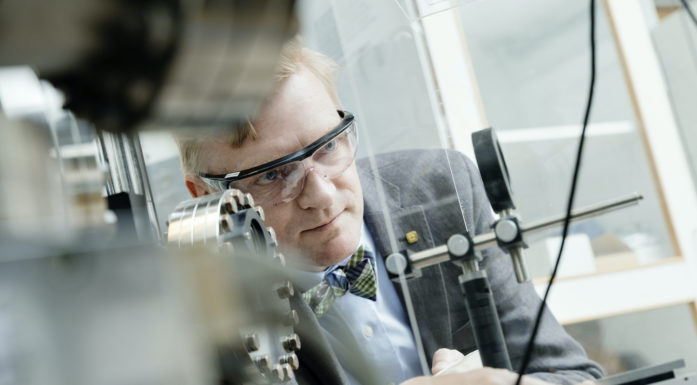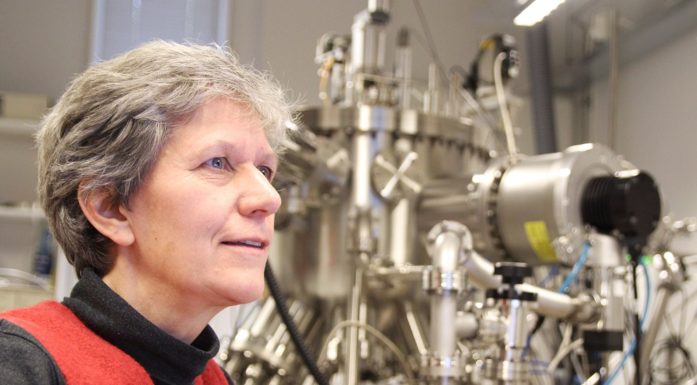When 80 microns is enough
Should you care that scientists can control a baffling current? Their research results could someday affect your daily living.
Physicists have managed to send and control a spin current across longer distances than ever before – and in a material that was previously considered unsuitable for the task.
We’ll return to what that strange sentence really means. But a spin current is a current that is kept going without relying on a simultaneous current of electrical charges.
“We’ve transferred spins more than 80 microns in an antiferromagnet,” says Arne Brataas, a professor in NTNU’s Department of Physics, and head of the university’s recently launched Center for Quantum Spintronics (QuSpin).
Eighty microns – a mere 8/100 000th of a metre – is that so impressive?
“We’re not exactly sending signals to the other side of the city. But this is far in the world of nanoelectronics,” says Brataas.
Nanoelectronics forms the basis for all the smart technology we surround ourselves with.
Right about now you can start doing your happy dance. That’s because 80 microns is getting to be a great enough distance to matter to people besides the scientists who are interested in knowledge for its own sake.
QuSpin has been collaborating with international physicists, including several in Germany and the Netherlands. The results are so intriguing that they are being published in the latest issue of the journal Nature.
So what is spintronics?
The technology of the future may depend on spintronics. If you don’t know what it is, you might as well learn about it. But you can also jump ahead to the next section if you just want to learn about its practical uses.
Atoms have several parts. Electrons are the negatively charged particles, as many of us learned in science class.
But electrons don’t only have a charge, they also have spin, an apparent internal rotation.
The spin has a direction, which is the basis of magnetism. A ferromagnetic material has a preference to align the spins in one particular direction. These materials are the magnets that you put on the refrigerator door.
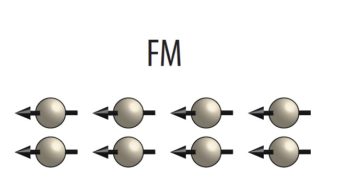
A material is ferromagnetic when the magnetism of a preponderance of atoms aligns in the same direction. We can perceive this material as magnetic on a macroscopic scale as well. Illustration: Erik Folven, NTNU
Antiferromagnetic materials are also magnetic, but you don’t notice their magnetic quality. The atoms in the material alternate between spins in opposite directions. These alterations effectively zero out the total spin so that the material itself does not have a magnetic moment. These materials don’t work on your refrigerator door.
How spins are organized can therefore have very clear consequences for how a material behaves. The spin can be exploited.
Magnetism can transfer signals
Brataas and his colleagues aren’t currently focusing so much on practical uses, so that’s up to us to do.
Today’s technology transmits signals in a computer’s microchips by means of an electric charge. In an electrical current, electrons and spin both flow through the material.
But in the future a spin current will be able do parts of the same job, using magnetism to transmit the signals instead, without electrons passing through with the current.

In antiferromagnets, magnetism at the atomic level is not organized in the same direction as with common magnets. Instead, the magnetism linked to an atom in antiferromagnets points in the opposite direction of its neighbour. Illustration: Erik Folven, NTNU
What are the benefits of spin currents?
- Well, for one, a spin current can sometimes flow more readily than an electrical charge current, since only the spin moves and not the electrons. This results in less energy loss in transmitting the signal.
- A spin current does not generate a lot of heat. As the transistors on microchips have become ever smaller, overheating has become a growing problem, causing microchips to melt. Using spin current means smaller transistors can be used –another practical feature as new electronic gizmos pop up everywhere.
- Spin current can also be controlled much more quickly. So all the new gizmos can be a lot faster.
Controlling spin current
These results would not be nearly as exciting if physicists couldn’t control the spin current at the same time. But they can.
- Physicists can start the spin current by applying an electric field at one end of the material. The signal flows through the material without the electrons moving from one end to the other.
- Physicists can also do the opposite at the other end, and transfer the spin current to an electrical current.
They have managed to do this at temperatures approaching room temperature. Granted, 200 degrees Kelvin – or -73.15 degrees Celsius – is a bit chilly for a room, but it falls within the range of naturally occurring temperatures on Earth. The researchers expect that they will be able do this experiment at a more comfortable room temperature pretty soon as well.
The research group used the antiferromagnet hematite, an iron oxide (Fe2O3), in their experiments.
The results this time are clearly just a step along the way. The research team will continue to test other materials and look at how these materials respond to different types of influences.
High risk, but important
NTNU’s QuSpin was awarded Norwegian Centre of Excellence (SFF) status last year, a highly regarded recognition. The centre was created to combine theory with experimental physics in the spintronics field and can already show world-leading results.
“The centre focuses on high risk projects of major importance in many different directions,” says Brataas.
The status that SFF confers provides more stable research conditions, since QuSpin is guaranteed support for ten years. The funding facilitates high-risk research that can fail too. And they do, all the time.
Many of their experiments do not match the theories or vice versa, and that is important in its own way. But some experiments are spot on, and they can have particularly great significance.
International cooperation
SFF status has also provided greater opportunities for collaborating with other top researchers. You don’t receive SFF status without having already shown that you can perform at the very highest level within the field of study.
The key researchers are all affiliated with QuSpin at NTNU in either full-time or part-time positions.
NTNU has contributed significantly to the theoretical basis for the experiments. Researcher Alireza Qaiumzadeh has been central to this work, as has Associate Professor Rembert Duine at Utrecht University in the Netherlands.
The experiments themselves were carried out at the Johannes Gutenberg University Mainz, where Professor Mathias Klaeui oversees them. Both Duine and Klaeui are affiliated with QuSpin through part-time positions at NTNU.
In addition to the SFF status providing more predictable conditions for the research group, Brataas has also been awarded an ERC Advanced Grant of NOK 19 million from the European Research Council.
Reference: ‘Tunable long-distance spin transport in a crystalline antiferromagnetic iron oxide.’ R. Lebrun, A. Ross, S. A. Bender, A. Qaiumzadeh, L. Baldrati, J. Cramer, A. Brataas, R. A. Duine & M. Kläui. Nature, 13 September 2018.
